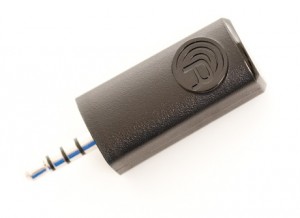Tech
Hands-On: RedEye mini turns your iDevice into a universal remote
Turn your iPhone, iPod touch, or iPad into a universal remote for under $50


Hardware
The RedEye mini comes in a great little carrying case and the device itself is less than two inches in length. It also sports a RedEye logo, which serves as the receiver if you want to turn the RedEye mini into a learning remote."We can send signals up to the mini’s processor through the left and right channels, and the processor can respond over the microphone line. Thankfully iOS gives us fine grained control over audio playback and recording so we didn’t have to worry about keeping up on that side."They also use a technique called power harvesting to give the RedEye mini an extra boost when transmitting an infrared signal. In addition to the internals, the hardware looks great, as you can see in the photo below. Traditionally dongles take away from the overall look of the device, but not in this case.
Software and Setup
You download a free App from the App Store and then plug in the RedEye mini to your headphone jack.First Run
For my test I wanted to use the RedEye mini in my main viewing area. That setup includes a Vizio TV (it's usually hard to find the remote codes), a Sony DVD player, and a Motorola DVR (DCT6416). The first thing I did was click on the Setup tab. Then I tapped on the name of my room--in this case I used the default RedEye mini. From there I added my devices. This is a pretty straight forward process that involves selecting your device type, and then the manufacturer. You then give it a name and it automatically fetches a selection of IR codes (from an online database of more than 45,000). You then can test the codes to see if your device responds. Then you save the device and move on to the next one. After you've selected all of your devices you then add an activity. In my case I created one called Watch TV. I added devices to my activity and then was able to customize the remote.Adding devices
I customized the remote to put the channel up and down where the page up and down normally are You can choose from different button styles, re-arrange the layout, and even combine the UP button from your TV with the DOWN button from your DVR--all on the same screen. If your device doesn't respond to the built-in codes, you also have the option of learning the commands of your existing remote controls. In general the process is pretty straight forward and in my tests I was able to control the TV and DVD, and had sporadic control of the DVR. I'm of the belief that it has more to do with the DVR than the remote, but will continue to chase down the issue. Also, since it's an activity-based system, you can setup activities like Watch TV, except instead of just having a remote, you can have it turn on the TV, change the input, turn on the cable box, etc.. The possibilities are pretty endless.